One of the most interesting holidays to experience, Ramadan food is a central part of the experience to break fast with friends family and of course to celebrate Eid.
Ramadan in 2025 is February 28, 2025 – March 29, 2025
Growing up Ramadan was something that I had heard of but I didn’t know much about. As an adult I’ve had friends who celebrate Ramadan but only knew that at Ramadan food was not eaten during daylight.
Some think it would be odd to share Ramadan food on a site called Bacon is Magic. But the motivation of the site is to explore cultures through food.
And we’re certainly not against visiting those where pork is not eaten. Early on I visited Jordan, and will continue to visit countries where pork is not consumed. This year I will be spending Eid in Indonesia with my partner and his family.
Ramadan is a fascinating holiday that I have loved learning about.
Ramadan is a month-long period in the Muslim calendar that marks the first revelation that was given to Muhammad.
Ramadan is an important period in the Muslim year as it is during this period that Muslims will fast during the day.
It is considered to be very important as one of the Five Pillars of Islam that should be observed by devout Muslims.
Introduction to Ramadan
It can be easy to focus on the act of fasting as being the key aspect of Ramadan. However, this is not the actual purpose and goal of Ramadan.
Along with fasting, Ramadan is to help people to reflect on their life. People give time to prayer and to look at how they are contributing to their community and the greater world around them.
Because of this focus on being a good Muslim during the Ramadan period, it isn’t just food that is avoided by many during this time.
Smoking tobacco, sinful behavior and sex are also avoided by many Muslims during the month.
One of the most important aspects of Ramadan is the focus on reflection and prayer during the month, and one of the traditions during this period is Tarawih.
This is an additional prayer after the Isha prayer to those that are carried out every evening by devout Muslims. Many people come together in the mosque in order to pray together.
Another Ramadan tradition is the reading of the Quran, This Muslim holy book can be divided into 30 sections, which usually fits nicely with the month observing Ramadan.
In some countries traditions and laws help people complete the month successfully. One of these is the restriction of work duties in many Middle Eastern countries during this month.
People often work no more than 6 hours during this period in the UAE.
With an increasingly global population some areas of the world that have particularly long days. Some Muslims will follow the daytime schedule of Mecca when deciding the hours during which they fast.
Otherwise some in North European countries could be fasting for 22 hours each day!
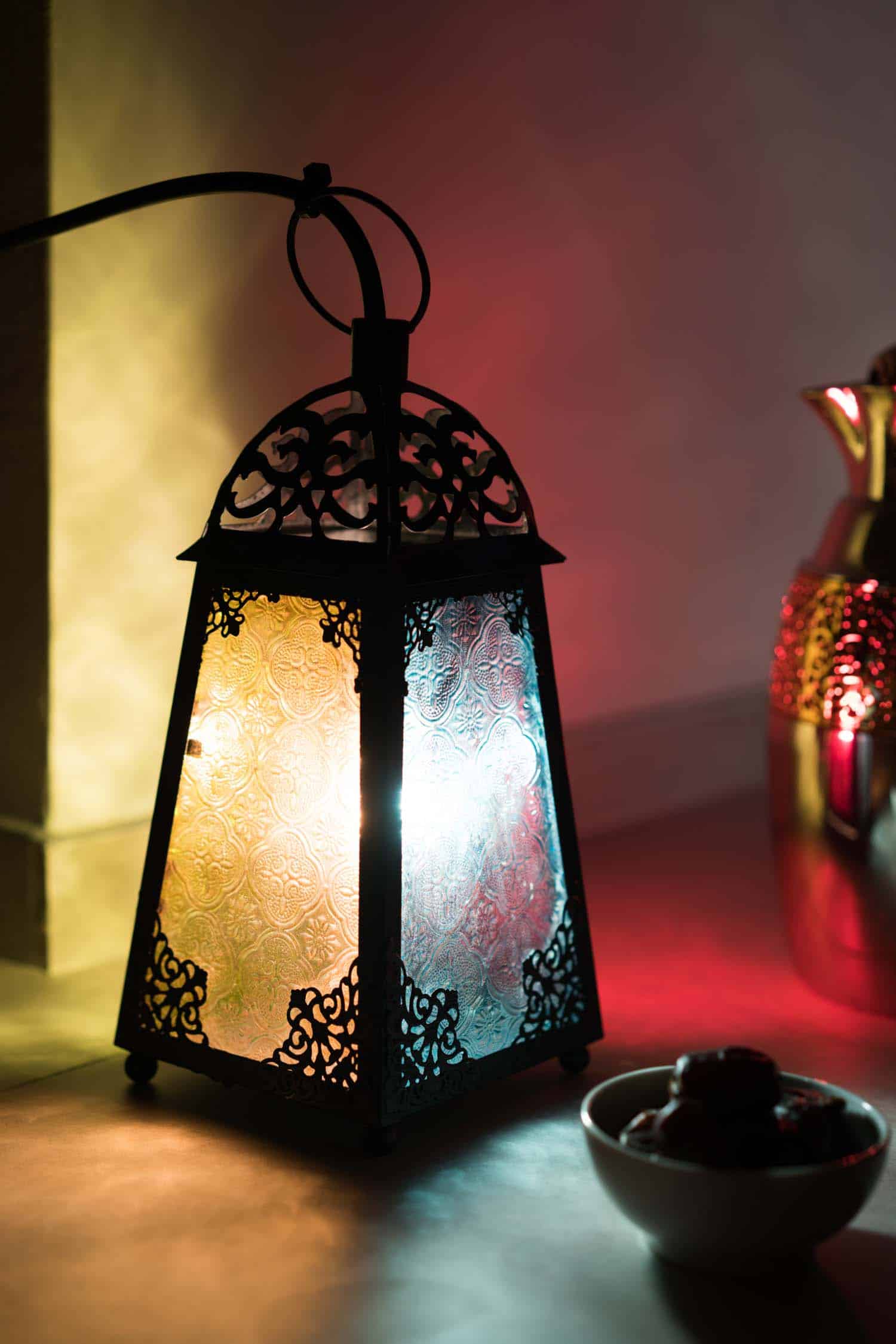
When is Ramadan in 2024?
One thing that can make Ramadan a little more challenging for many Muslims is the time of year when the month of prayer and fasting begins.
The Islamic calendar tracks the lunar cycles, giving the calendar 12 lunar months. In practical terms, this will align to either 354 or 355 days per year.
The result is that Ramadan can happen at different times of year. And the longer days can make it more challenging than when Ramadan happens in the winter months, when the hours of fasting are shorter.
As the seasons can be different around the world, this is also something that can make the period of fasting more of a challenge.
The Islamic calendar does have fewer days than that of the Gregorian calendar. .
Muslims will begin to observe the traditions of Ramadan from the evening of March 10, 2024.
The end of Ramadan will be marked by Eid Al-Fitr which is April 9, 2024.
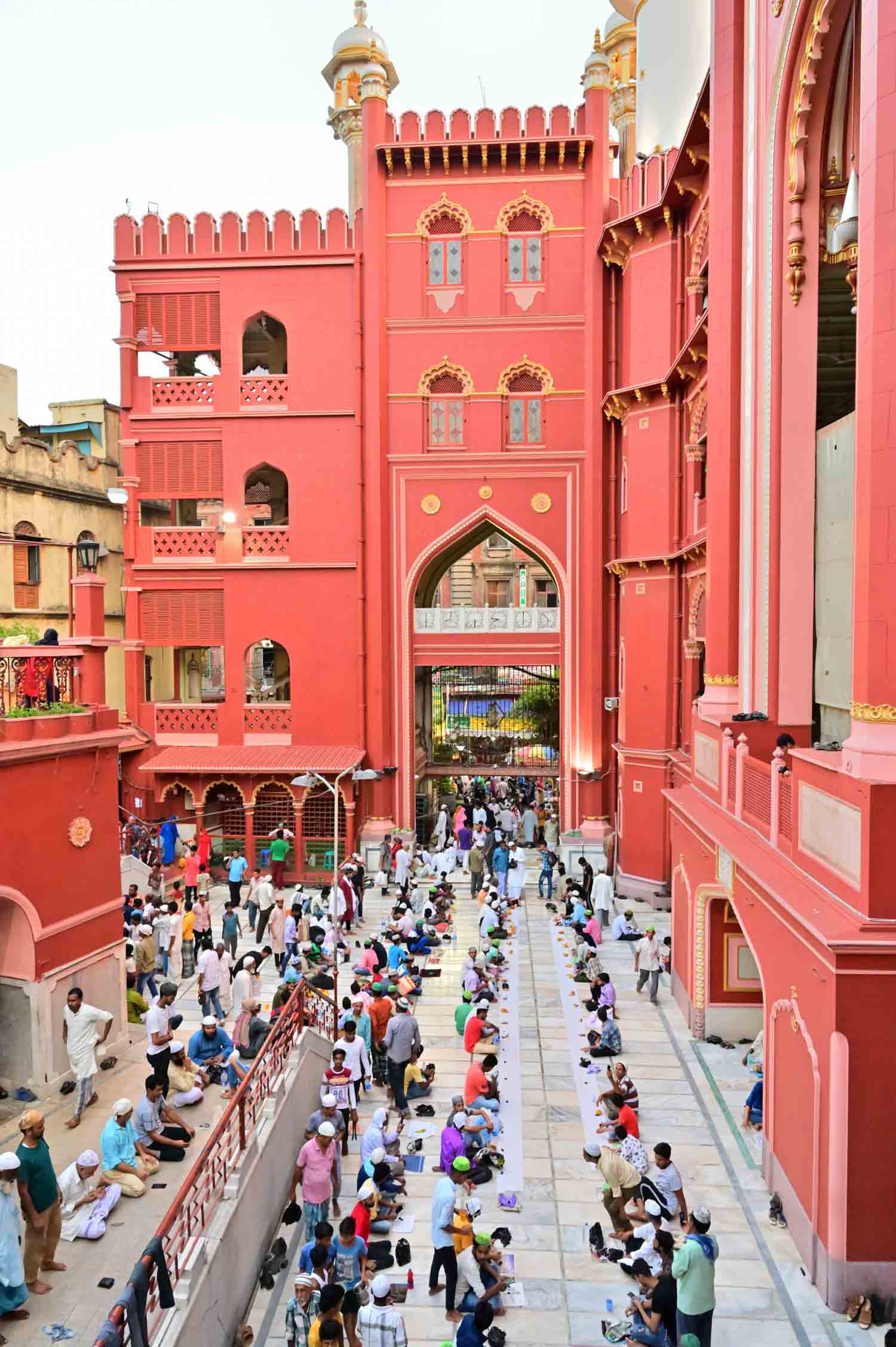
Does Everyone Fast for Ramadan?
Fasting and reflection are an important part of the Ramadan observation. However, not everyone is expected to fast from sunrise to sunset.
There are several exceptions to the rules around fasting. These can be related to the health or the age of the individual.
Ultimately, there is no expectation for those who may suffer ill-effects from fasting to carry out this aspect of the Muslim observation.
The elderly and those who have disabilities that might suffer from fasting are exempt from the observation are not expected to fast.
One of the key exceptions of the Ramadan fasting are children. As they are still growing and their bodies will need nourishment to help them to continue to grow.
For this reason, those who have not yet reached puberty are not expected to observe the full scope of the fasting. Although their parents will often introduce them to the importance and the significance of fasting as a part of the Muslim faith.
Another exception to this rule is that women who are pregnant. They are also not expected to fast during Ramadan, to ensure the health of the child.
However, a more controversial aspect of fasting during Ramadan is when there are major sporting events that occur during the holy month.
This was especially the case in the London Olympics in 2012. Some athletes did not observe the fast as it would have significantly impacted their ability to compete on the world stage.
There are certainly some who objected to this during Ramadan. Yet there were also others who feel that this is reasonable during such events.
Again Ramadan isn’t just about fasting. There is so much more to this Muslim holiday.
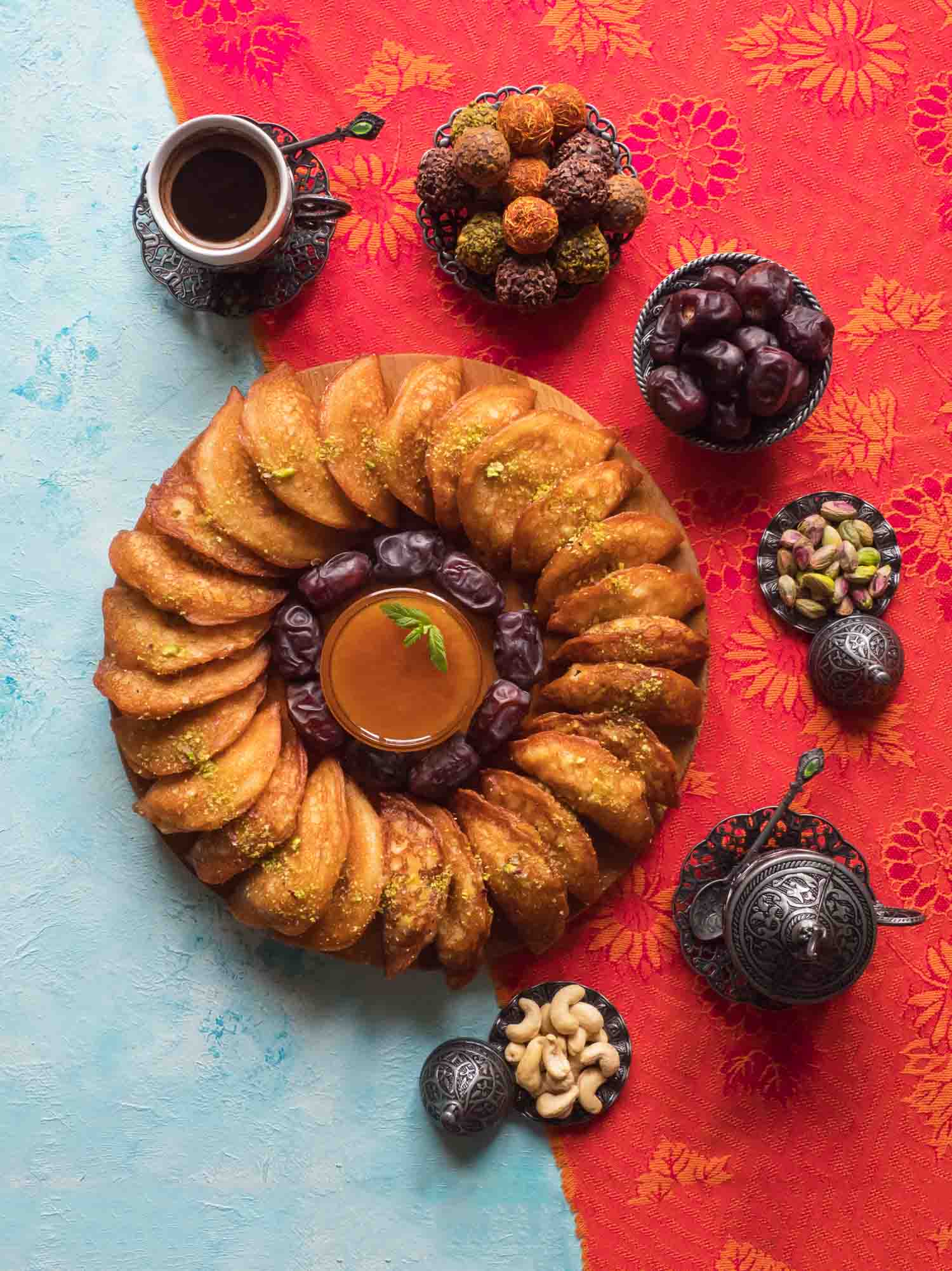
Traditional Ramadan Food
The biggest challenge to observe the rules of Ramadan is that people completely change the way they structure their meals.
The secret to success is to eating satisfying suhoor food.
Suhoor, which can also be spelt as suhur, is the meal that Muslims have before dawn. It is traditionally followed by the fajr prayer.
In many Middle Eastern countries towns and cities will have an individual designated as the mesaharati. This is the person who wake people up to have their pre-dawn meal.
This can either be done vocally, or in some countries such as Indonesia they will have a traditional drum to help wake people.
For Ramadan meals most people strategize about the foods that will help to keep them going throughout the day.
Protein rich foods such as eggs, legumes and almonds are often among the ingredients of the foods that are eaten for suhoor.
People also tend to avoid processed carbohydrates. And instead look at whole grain foods such as wholemeal bread or dough products that release energy more slowly.
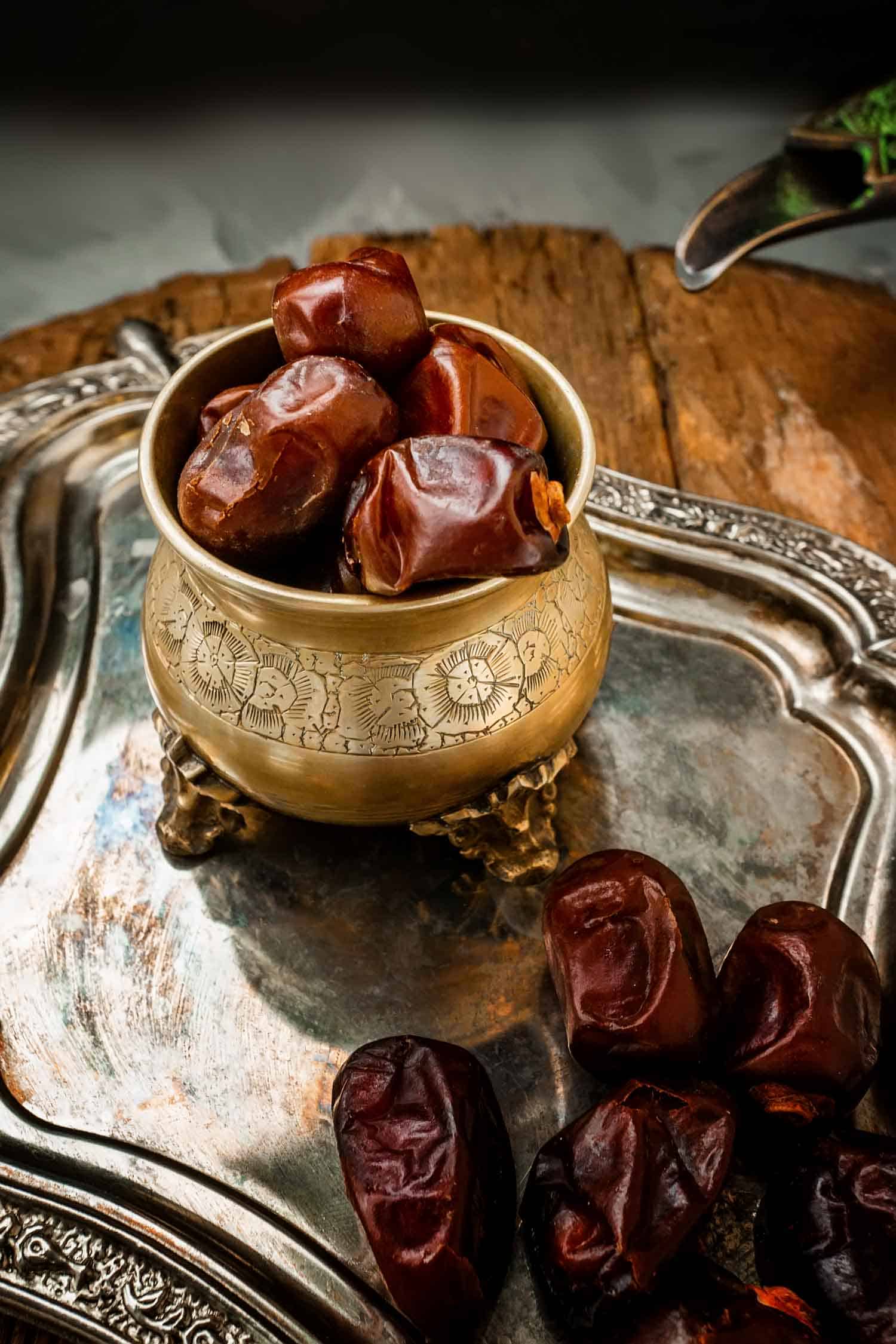
Dates
Dates have been one of the most important foods for Muslims over the centuries. It is said that it was one of the foods that the prophet Muhammad ate.
Because of this, you will always see dates on the table during Ramadan as it is customary to break the day long fast with a date.
Although dates are quite sweet and can offer a little more of a sugar hit than is usual in the morning, they also have a lot of fibre.
This is very important when it comes to suhoor food, which requires energy that will release more slowly during the day. Dates can also be eaten with yogurt or can be used to supplement farina or porridge during this meal.
Eggs
This is one of the vital ingredients in many suhoor meals that are eaten throughout Ramada. It is crammed with protein.
They can be prepared in simple ways such as fried or scrambled. However, another great way to set up for the day ahead is with a simple omelette with spinach and cheese.
The fats and the protein here will release more slowly throughout the day, helping those fasting not to feel quite so hungry as they go about their day.
Farina
A common breakfast dish that is made of milled wheat. Farina can be prepared with either milk or water. It has a similarity to porridge.
The texture is quite smooth. Although when it is prepared by itself, without being sweetened, it can be a little bland. The key attraction of this as a breakfast food is that it releases energy slowly, rather than being a quick-release carbohydrate.
When it comes to the flavour, it can be supplemented with fruit, sugar, cinnamon or nutmeg in order to improve the taste.
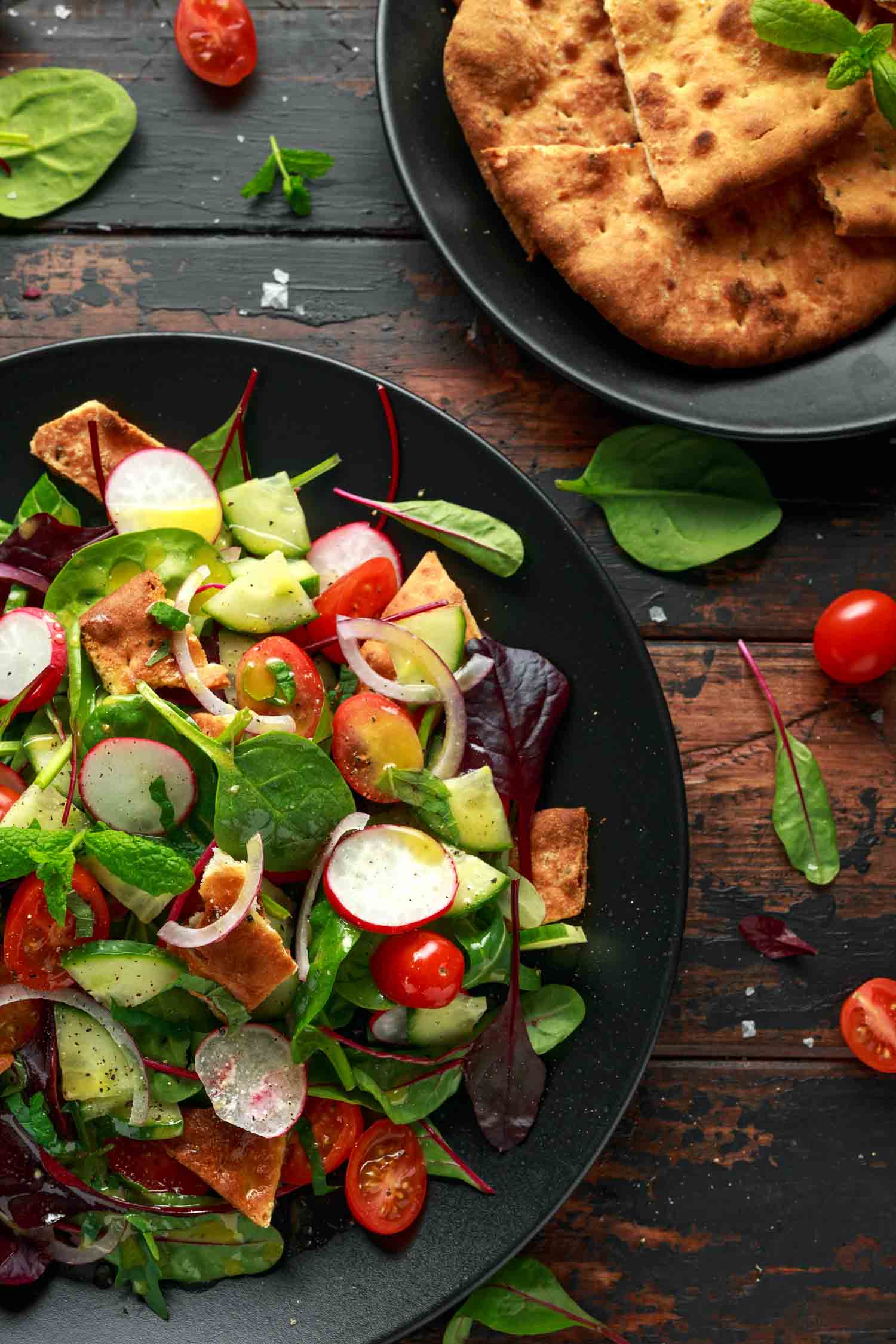
Traditional Iftar Food
Iftar is the evening meal that is held at the end of a day of fasting. In many countries this is often a communal meal that families and communities will come together to share.
As people are reflecting on their religious lives during the month of Ramadan, sharing Iftar and preparing Ramadan food for others is often considered to be a positive and charitable act.
In some areas it can be traditional to begin the meal by eating three dates. It is said that this is how the prophet Muhammad would break his fast.
Fattoush
A zesty and fresh salad that is common throughout the Middle East, this Ramadan festival food is often served at buffets for the breaking of the fast.
The basic ingredients are lettuce, cucumber, tomato, mint leaves and red onion. But it is the dressing that really makes this dish stand out.
Made with red wine vinegar, olive oil and a generous measure of lemon juice, it adds a fresh citrus taste to the whole dish. You’ll also find that this is a common side dish. And it may also make an appearance at Eid celebrations as well.
Tabbouleh
Another salad option that is one of the healthy recipes for iftar, tabbouleh is a Levantine dish in origin.
It is a fresh salad that has bulgur wheat as the staple ingredient. It is supplemented with tomatoes, mint, onion and parsley.
This is then drizzled with a dressing made of lemon juice and olive oil and seasoned with salt and pepper. This is often a side dish during communal iftar meals. It is a tasty addition to the plate.
Beguni
This Ramadan food is made with eggplant. And it’s a particularly common part of the iftar meal in the Bengal region of India.
Eggplants are sliced before they are dipped into a batter. The batter is made with flour, salt and turmeric. However, some people will also add some poppy seeds or baking powder in order to enhance the taste.
The eggplant slices are deep fried. The result is a crunchy and tasty fritter that is usually a part of a larger meal.
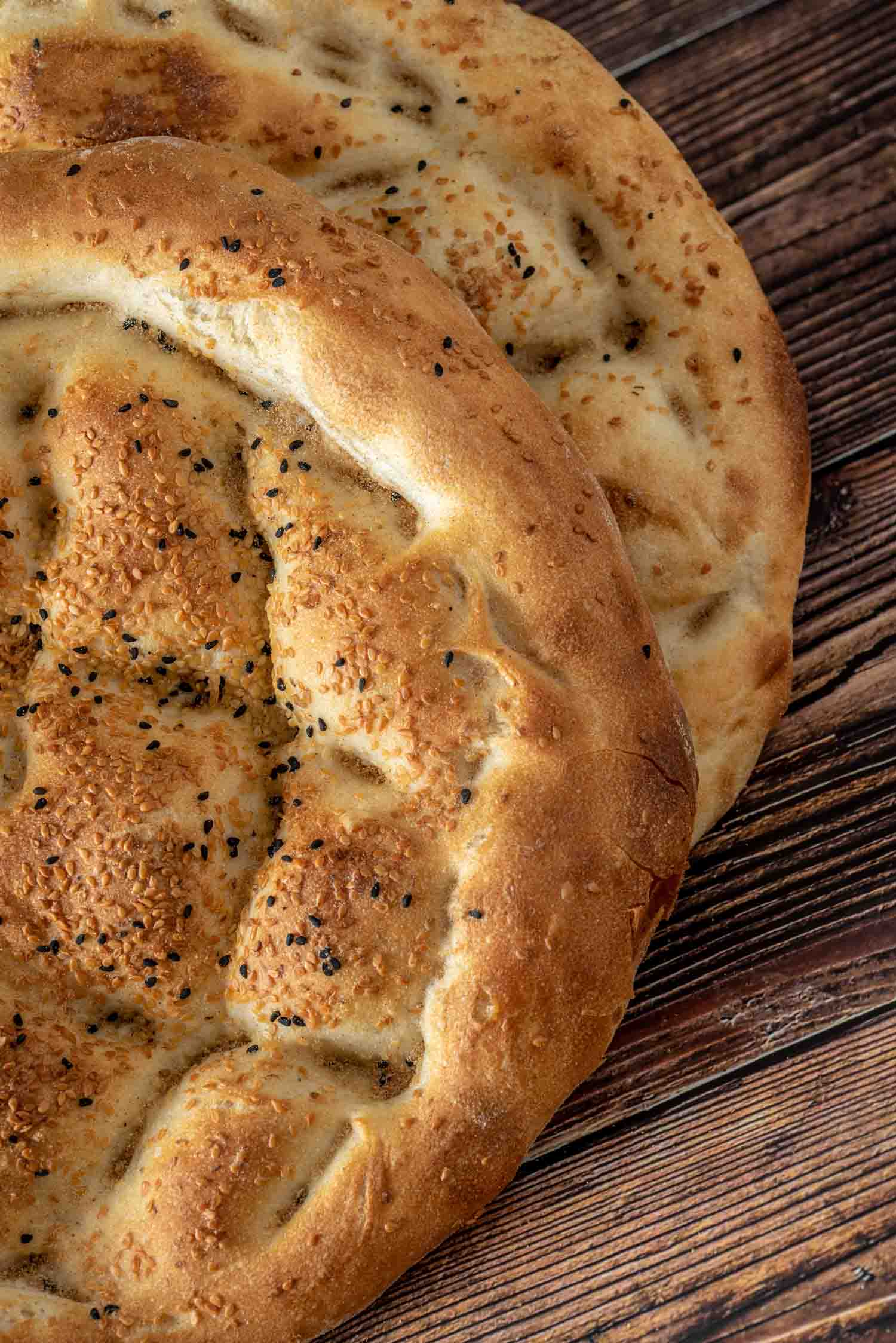
Ramadan Pita
Perhaps the most popular Ramadan food. This pita is a soft leavened Turkish bread known as Ramazan pidesi. It is round and flat and almost resembles a pizza dough.
It’s a simple Ramadan recipe made with wheat flour and usually is topped with sesame and Nigella sativa seeds.
Harees
This dish is a Ramadan traditional food that is most commonly found in the Arab states. Although harees can pop up in other many non-Arab countries as well.
It is a dish that is similar to porridge in terms of consistency and is made with cracked wheat. It is cooked with meat such as chicken and butter.
The mixture is then drained before being seasoned with sugar and cinnamon, and can be served with side dishes of vegetables as well.
Babur Lambuk
This traditional Malaysian Iftar food is one that is very popular as a way to break the fast in the evening. Although it is similar to porridge at a very basic level, it is one that takes time and effort to prepare. It is usually part of a communal meal.
Seasoned with fenugreek, cardamom and star anise, the porridge is cooked over several hours to ensure it gets the right consistency.
Meat, dried shrimp, fried onions and other ingredients are then added into the mix. The meal is then topped with a few additional ingredients that have been fried, to add colour and texture to the dish.
Harira
One of the dishes that originated in Morocco, but is now popular in many countries. Harira is a common dish eaten as part of the evening meal.
There are many varieties on the theme of the soup depending on where you are in the world. But the basic ingredients include tomato, chickpeas and lentils.
These are commonly combined with meat, depending on what is available. It can also include vermicelli and butter to give the soup a creamier taste.
It is slow cooked until the meat is tender and the soup is ready to serve.
Kabsa
A Saudi Arabian dish originally, kabsa is a dish that is commonly eaten during the evening meal of Iftar.
At its heart, it is a simple dish of rice and chicken cooked in a tomato broth. However, it is generously seasoned with a range of herbs and spices, including coriander, cloves, nutmeg, allspice and garlic.
To serve, it is garnished with raisins and almonds.
Masgouf
Originating in Iraq, where locals take pride in having the best recipes for the dish, Masgouf is a grilled carp dish that is often eaten during Iftar, particularly in Iraq and Syria.
The carp is a freshwater fish, and here it is deboned and prepared with a marinade. While the recipes for the marinade can vary, it is usually made with olive oil, ground turmeric, rock salt and the flesh and juice of the tamarind.
The fish is grilled before being served.
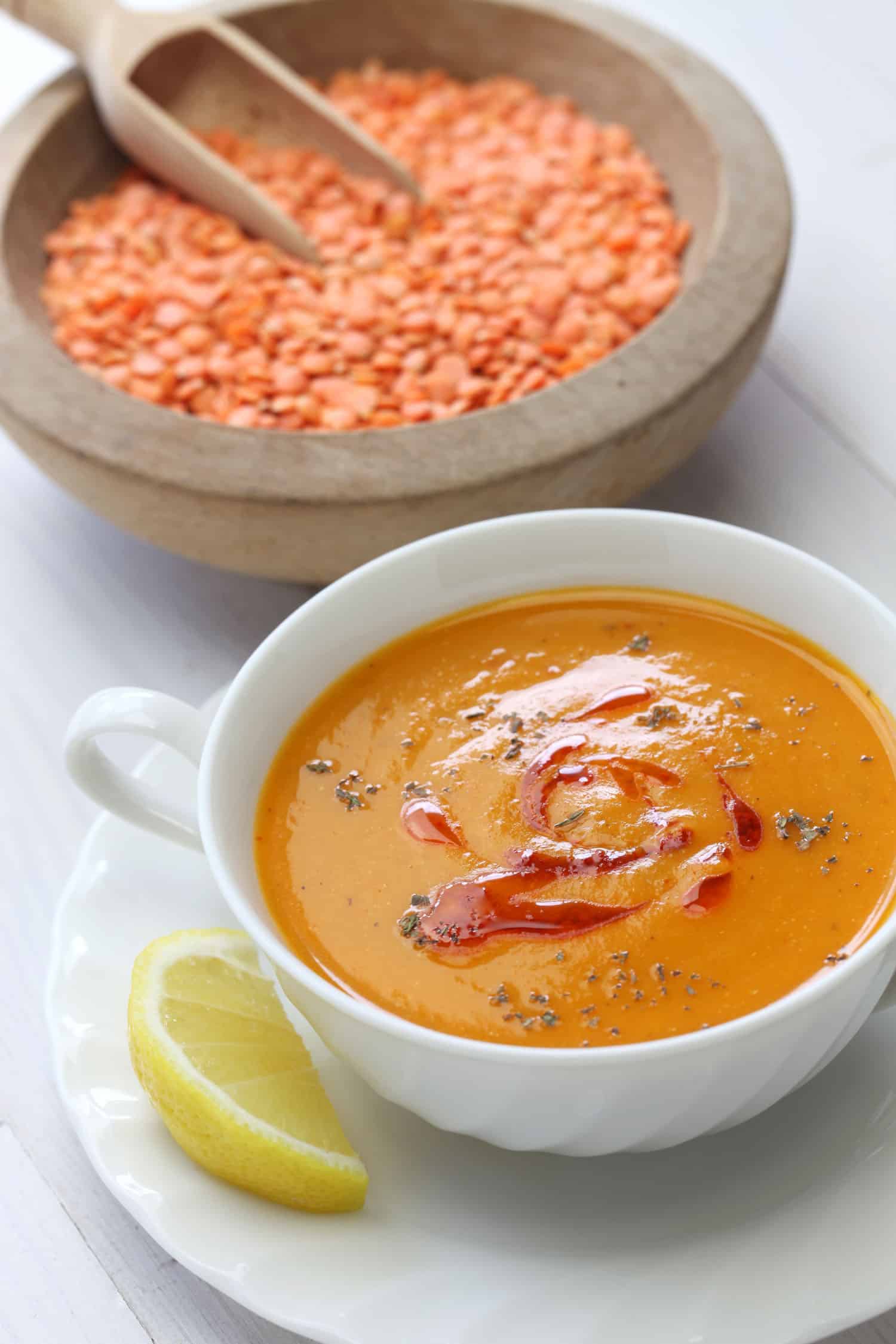
Lentil Soup
One of the key things about an Iftar meal is that it will have to replace some of the nutrients that have been lost during the day.
This is why the first course of this meal, whether it is a communal meal or at home alone, is a lentil soup. A simple slow-cooked dish in which the lentils soften in the water.
This is a great starter to the Iftar meal.
The preparation of the dish can be as simple or as complicated as needed. The simplest options made with onion and stock, with others including spinach or other vegetables to add nutrients as well.
Sanbusa
These savoury dishes are originally from Saudi Arabia. They are variants of the samosas that are found all across the Asian world.
The pastry is flaky and prepared in the way of a turnover, and the fillings are usually meat with a sauce, or you can from time to time find vegetarian options as well.
These are particularly popular at any buffet where the food has been prepared as part of a communal meal.
Shahan Ful
This dish is common in many parts of Africa, and at the heart of the meal are fava beans. These are cooked in water, before they are mashed into a paste.
This paste is then combined with green pepper, onion and tomato. Shahan Ful is usually served with bread, and can also be eaten with yogurt or feta cheese.
The fava beans provide a slow release type of energy. So this dish is great for preparing people for a day of fasting, rather than offering a quick carbohydrate hit in the early morning.
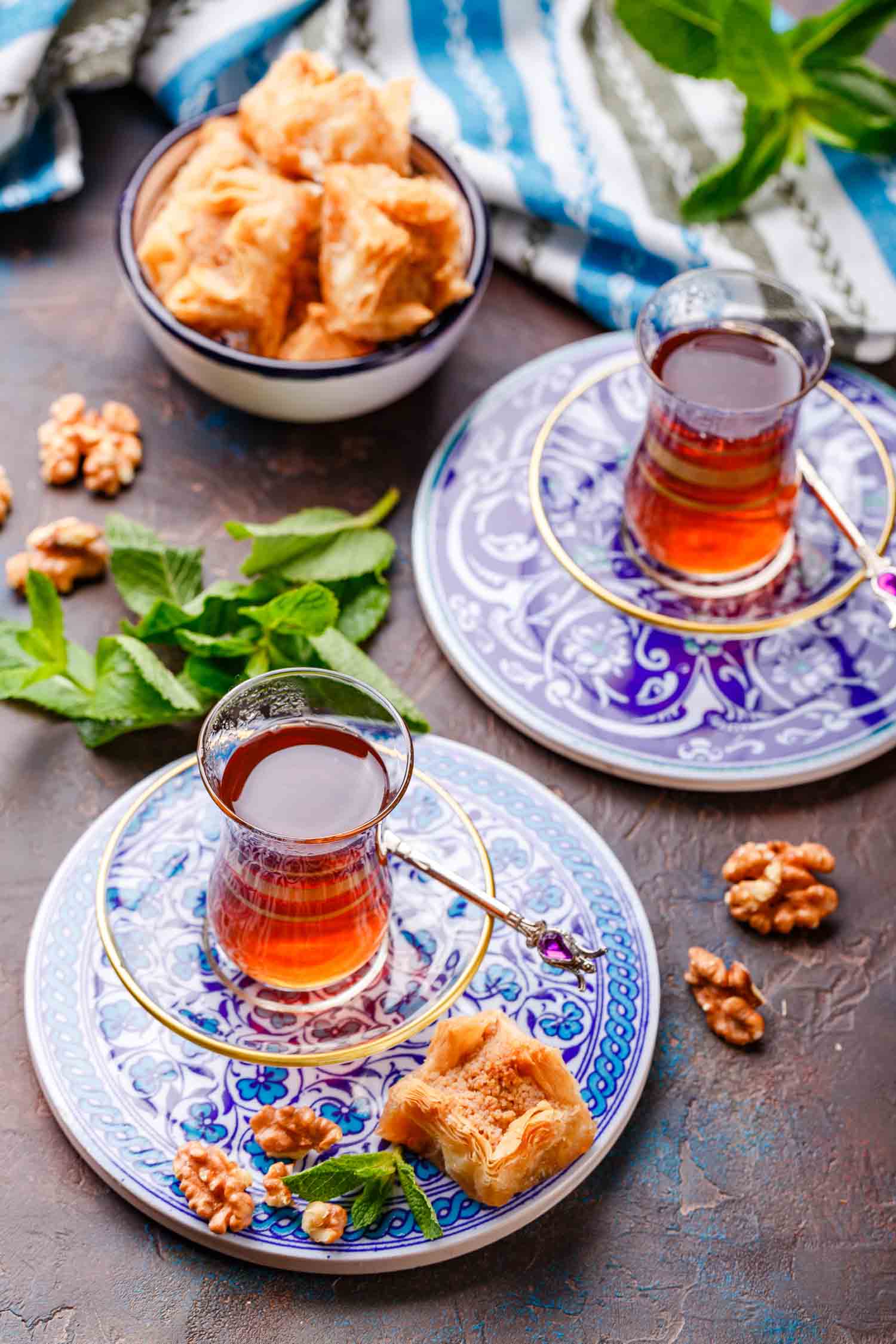
Ramadan Drinks
Amar Al-Deen
Also sometimes spelled as Qamar al-Din, this drink is made from sweetened apricot juice. Amar al-deen originates in Syria.
The apricots are boiled with sugar then dried into a paste. This paste can then be rehydrated by adding rosewater and ice as well.
In some areas, the apricot paste can also be used to make other desserts that are eaten during the Iftar as well.
Rooh Afza
This is an Indian liquid syrup that is used to make a tasty drink. It is usually combined with ice and milk to make for a refreshing milkshake.
This is most often consumed in the evening after a day’s fasting. It offers a refreshing way to start the evening meal. The syrup is made with a mix of fruit juices and herbs.
Also in some countries such as Pakistan, it can also be mixed with water to be drunk as well.
Tamar Hindi
A drink that is made with the tamarind fruit, this can be served as a fruit juice or as a soda in some countries.
The drink is made by crushing the flesh of the tamarind to extract the sour juice. This juice is sweetened with a little sugar then combined with water.
Tamar Hindi is usually served chilled, to give it a refreshing kick after a day of fasting.
Jallab
Another drink that is produced in the Middle East is jallab. It is made with grape molasses, carob pods and rose water.
This combination is smoked with incense in order to give it a more distinctive flavour. Like many drinks in this region, it is usually served cold with plenty of ice.
It will usually have pine nuts or raisins in the drink.
Also, the syrup can be bought bottled, as the preparation can be quite time consuming when cooking at home.
Erk Sous
A traditional Egyptian drink, Erk Sous is made with liquorice that has been mixed with water.
This drink is often served by vendors in Egyptian towns and cities, who carry large urns on their backs. As well, it can be prepared in the home.
The strong taste of liquorice is an acquired taste. But as it is usually served ice cold, it is popular as a refreshing drink.
The reason it is popular during Suhoor is that the liquorice in the drink is said to lessen people’s thirst in advance of the fasting period of the day.
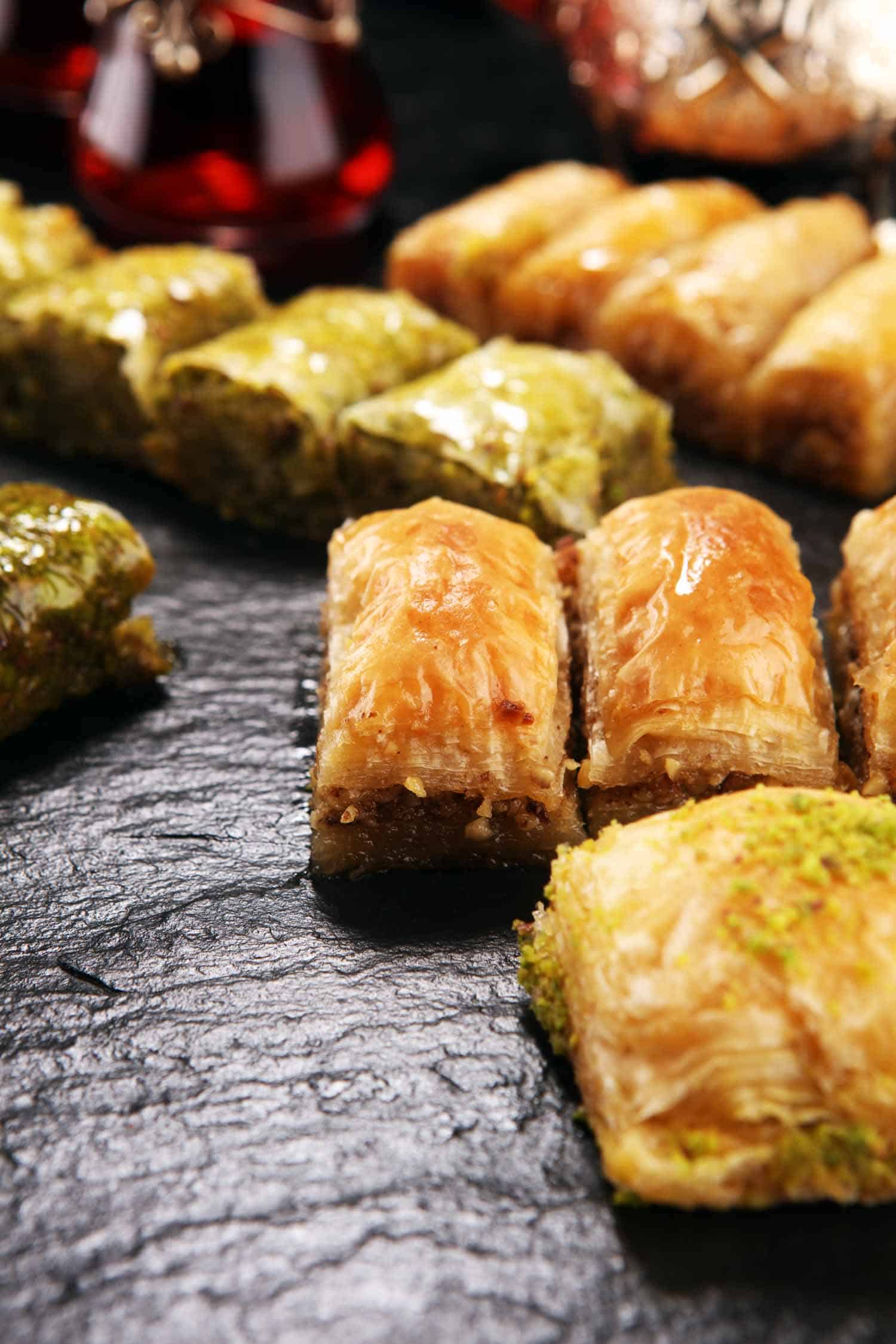
Ramadan Desserts
You must have a sweet tooth to celebrate as desserts aren’t just for the end of the meal but for breakfast as well.
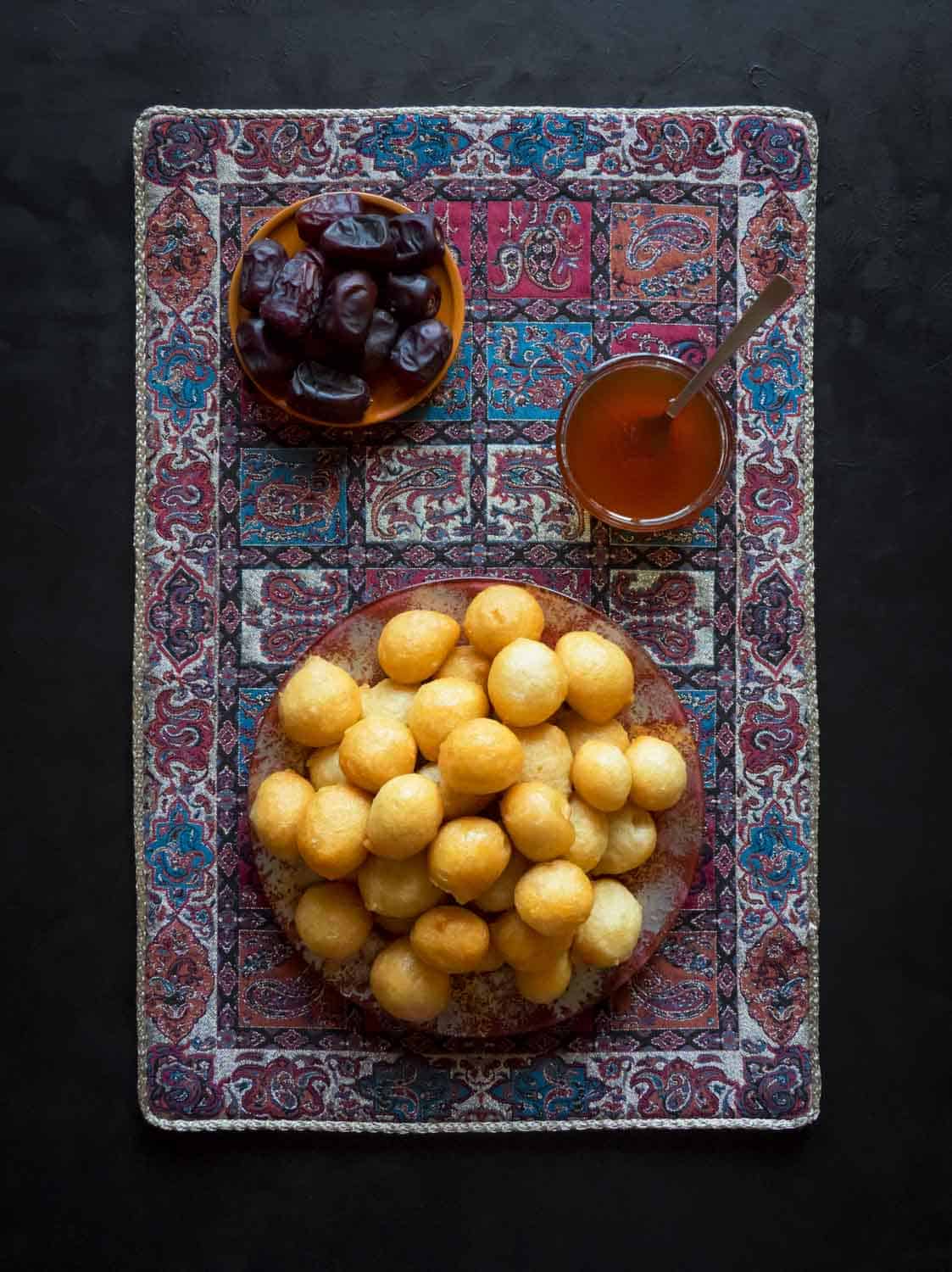
Luqaimat
These small dumplings are often a part of the evening meal. With their mix of consistency and sweet taste they are very popular.
The key to great luqaimat is they must be light and fluffy on the inside, and crunchy on the outside. The simple dough is often dipped in date syrup before cooking. Then they are rolled into small balls and covered in sesame seeds for cooking.
Luqaimat literally means ‘bite-sized’. It is a dessert that originated with the Bedouin people, but has become popular in many Muslim countries.
Kunafa
Kunafa is a dessert that has many variants across the Arabic and Muslim world. It is often eaten in the evening during the breaking of the fast.
The dish is made with a sweet pastry or dough, that is then soaked in a sugar syrup. This dough is layered with clotted cream or a smooth cheese and nuts such as almonds.
In some areas, it is then topped with a layer of chopped pistachios to serve.
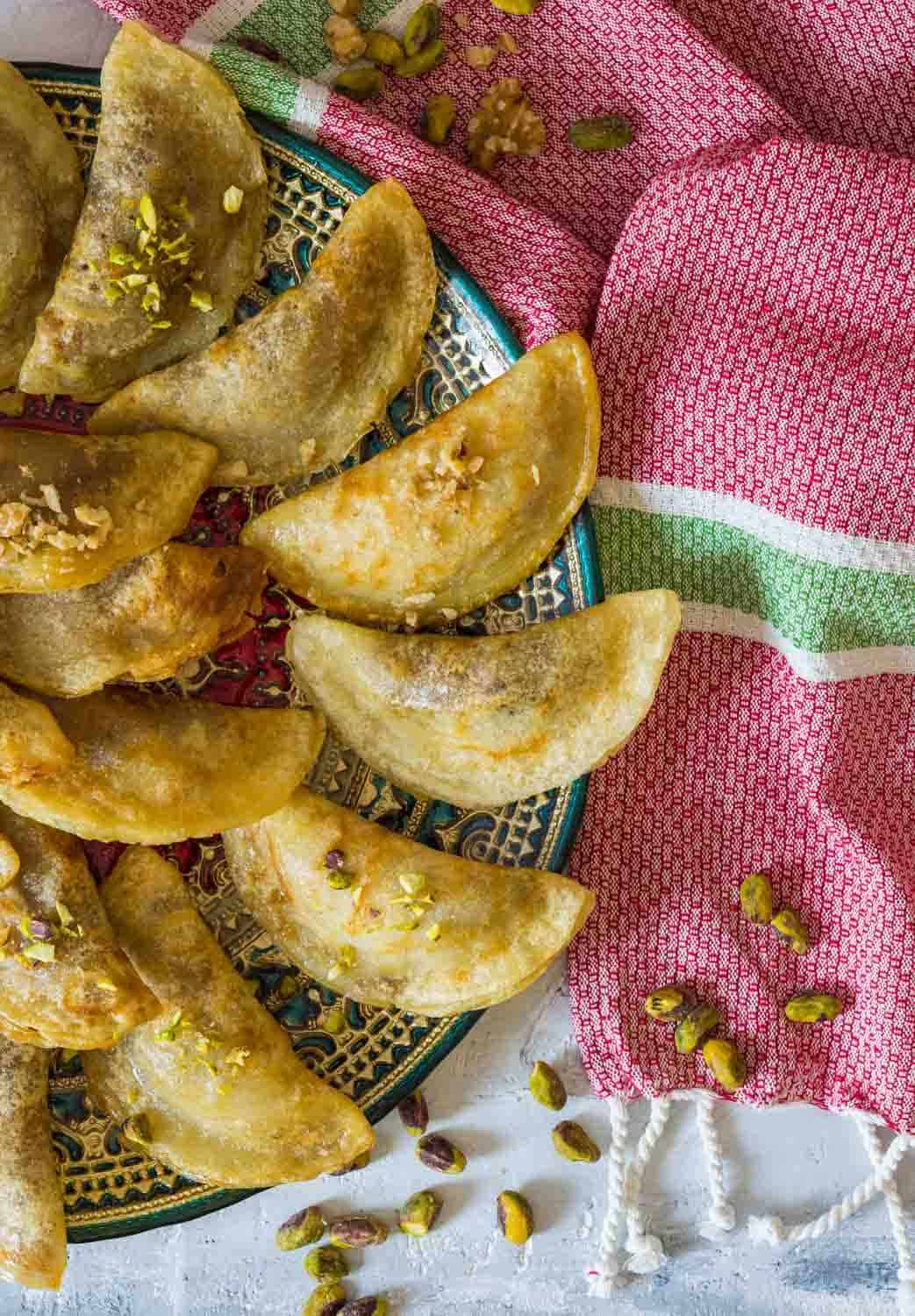
Atayef or Qatayef
Originating in Lebanon, these sweet stuffed pancakes are one of the treats that are often enjoyed after a day’s fasting.
The sweet dough is made with flour, cream, milk and sugar which are is whisked and fried. The dough must not be too thin so that it the treat is soft rather than crispy.
These pancakes are then stuffed with a sweet filling. One of the most common options is a combination of pistachios and ricotta cheese. These are generally an Iftar dessert food.
Gullac
A Ramadan dessert that is prepared with milk, sugar and gullac sheets. This is particularly popular in Turkey and is also wonderfully easy to prepare.
These gullac sheets are a light type of pastry. It is estimated that 90% of the production in Turkey is consumed during Ramadan.
To prepare the dessert, the milk, sugar and rose water is heated in a shallow tray. Then gullac is laid on top. It is covered with walnuts or sometimes fruit then layered with more pastry and milk.
The result is a creamy and tasty dessert.
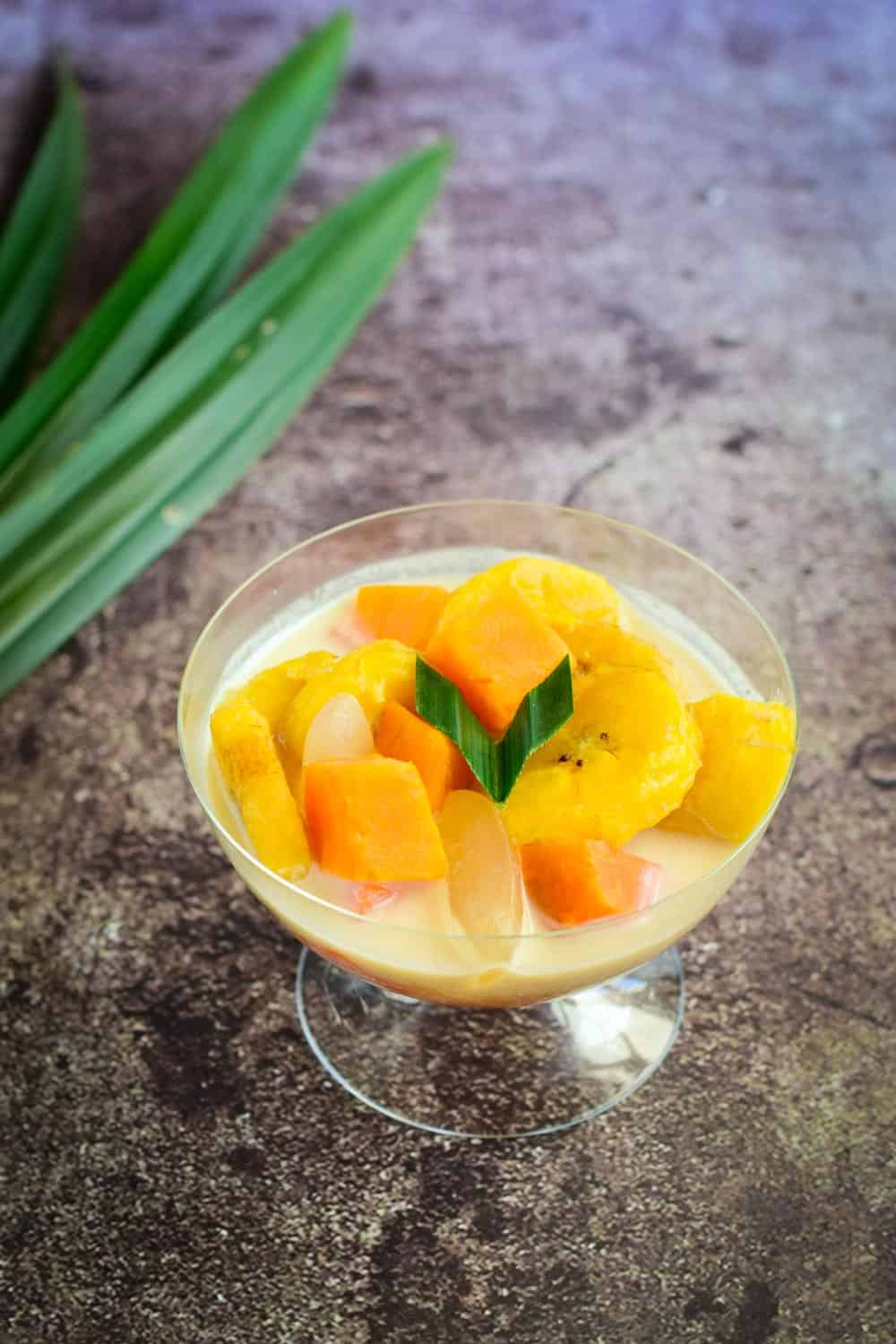
Kolak
A tasty dessert dish that is made with either palm sugar or coconut sugar, these sweeteners are mixed with coconut milk and pandanus leaf to make a creamy and sweet milk.
This is then served with fruit such as banana, jackfruit or tapioca pearls, which have been added to give texture to the dish.
The dessert is traditionally made by Muslims in Indonesia during Ramadan for the evening meal. Although similar variations are found in nearby countries.
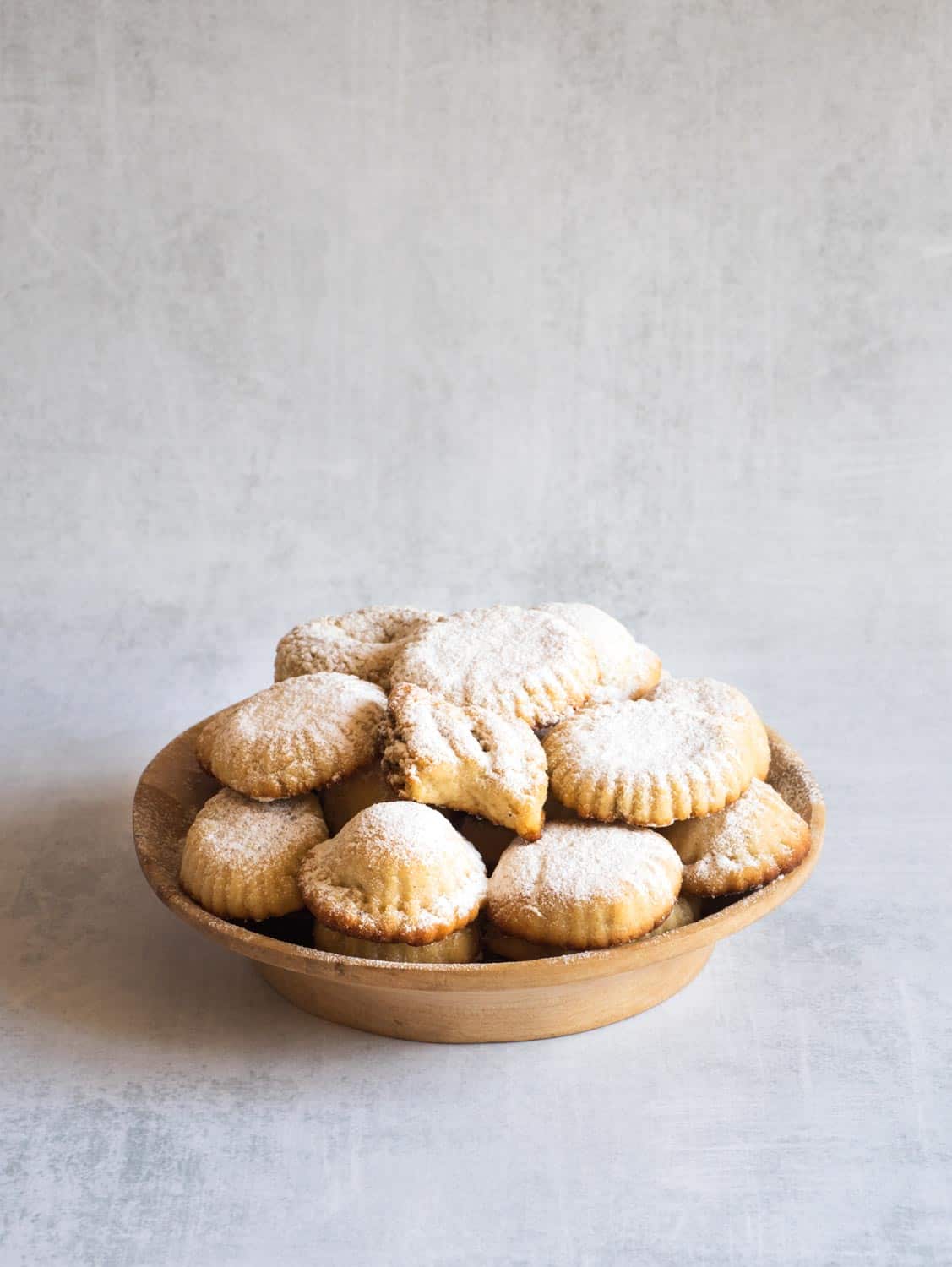
Eid Al-Fitr: Celebrating the End of Ramadan
One of the most exciting aspects of Ramadan is the celebration at the end of the month of fasting.
Eid Al-Fitr is the festival that marks the end of this significant period of fasting and reflection.
The date on which the festival begins can be different depending on where you are in the world.
It depends on when the moon is sighted in that particular part of the world.
This meant that while most Muslims celebrated Eid Al-Fitr on June 4, 2019, in Pakistan the celebration was held a day later. And it meant an additional day of fasting for Muslims in that country.
The festival traditionally begins with a communal prayer in one of the town or city’s open areas. Then families come together to have large celebratory meals.
In many countries that have a large Muslim population, the festival may involve between one to three days of public holiday.
Another tradition that is found across the Muslim world is to give zakat. These are are alms to the poor, which are often used to purchase food and clothes to be distributed.
There are some Ramadan foods that are specifically for Eid. These may include:
Kahk – AKA Eid Cookies
Kahk is another sweet treat that is often eaten during the Eid celebrations. They are of Egyptian origin and can be found in several countries in North Africa.
It is common to have a plate of kahka as they are often called Eid cookies.
These sweet small round biscuits are quite distinctive. However, it is the filling that makes these particularly tasty. They are commonly stuffed with pistachios, honey or dates.
Bean Pie
This Ramadan celebration food is often associated with American Muslim cuisine. This is prepared with a traditional pastry crust.
The filling for the crust is made with navy beans that have been thoroughly mashed. They are combined with milk, sugar, butter and eggs then cooked into a thick custard.
The custard is seasoned with vanilla, nutmeg and sometimes cinnamon to give it a sweet and creamy finish.
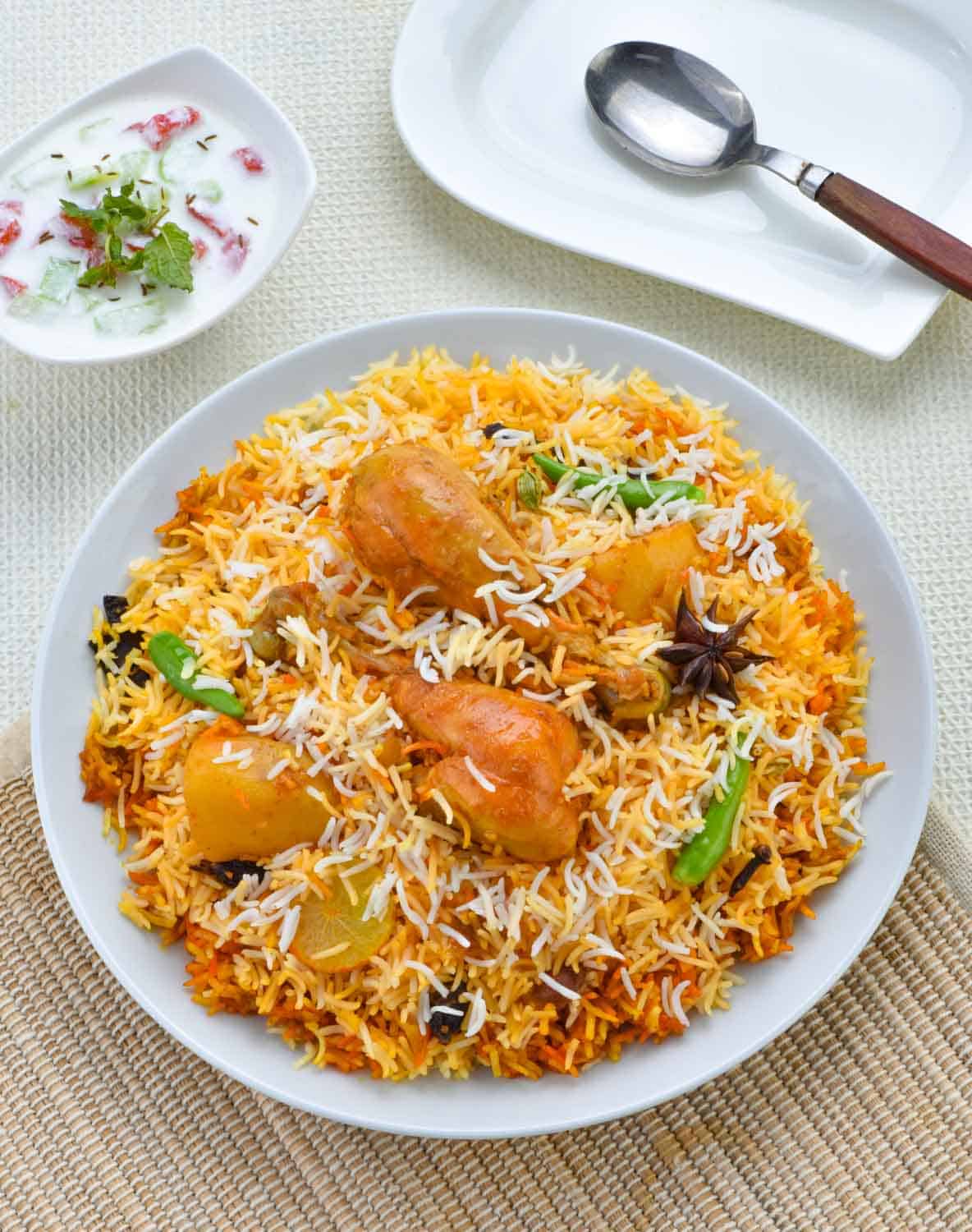
Biryani
Often found in countries such as India and Pakistan, biryani is a Ramadan food prepared to mark the end of the celebration.
Beef is the most common meat. Although you can prepare the dish with other meat as well. The meat is layered with basmati rice, which has been cooked in a seasoned broth to really give it a great flavour.
In most cases, a biryani will not be too spicy. But is prepared with yogurt and a range of herbs and spices.
Mansaf
A traditional Jordanian food, there are many who consider mansaf to be Jordan’s national dish. It is also very popular during Eid.
This Ramadan food is made with lamb, which is either cooked in a salty cheese broth called jameed, or served with a jameed sauce.
This is a large communal dish where a flatbread is served with a layer of rice, and then the meat and the sauce is layered on the top.
Traditionally this is a celebratory meal prepared for a gathering. It was historically eaten with the right hand, although it is becoming more common for it to be eaten with cutlery.
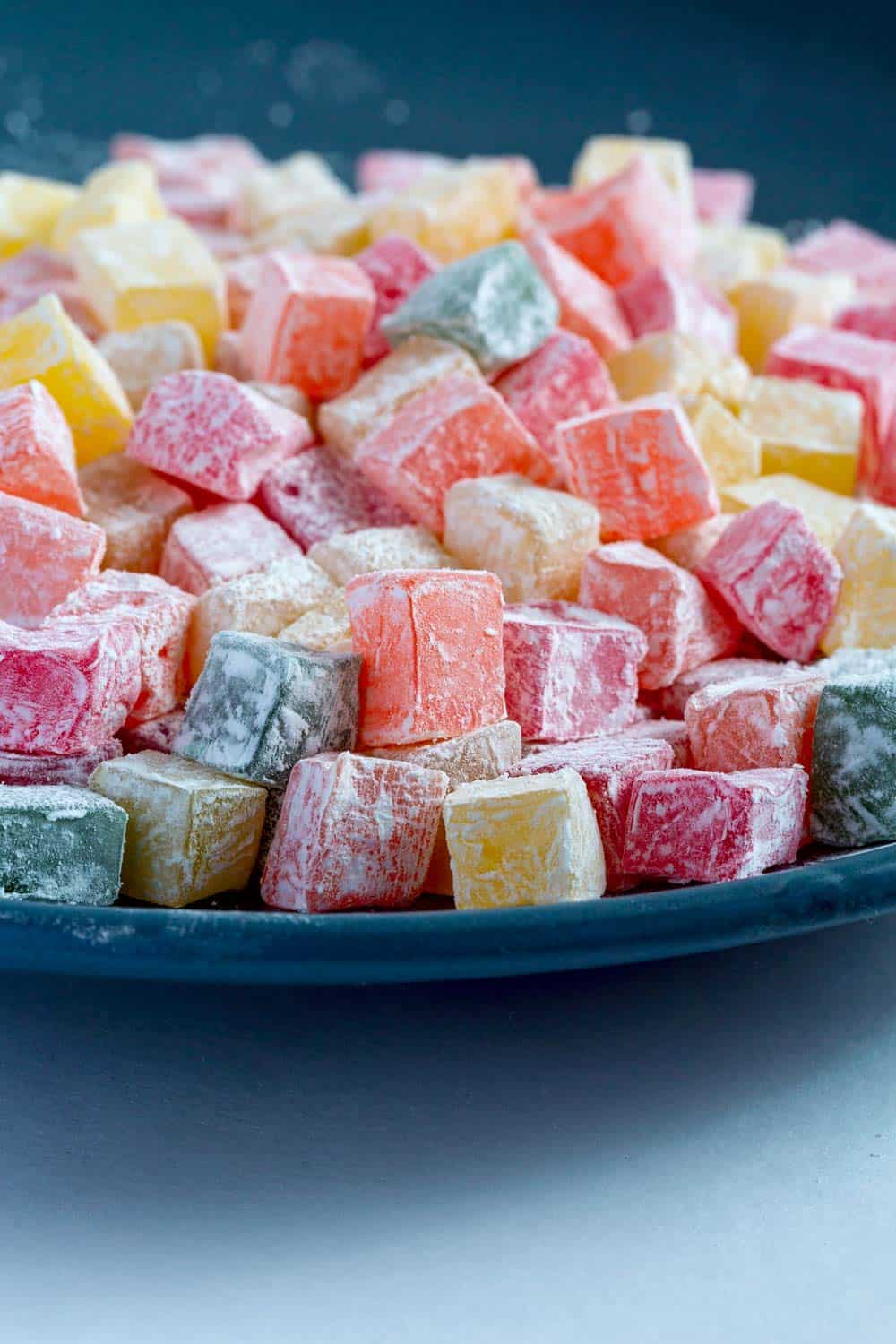
Turkish Delight
This Ramadan dessert is particularly common in Turkey, where the end of the fast also has the bayram tradition.
During this time children visit friends and neighbours and are given treats such as chocolates, candies or especially Turkish delight.
This smooth treat is one that is made using starch and sugar. But it can be changed with a range of different tastes such as rosewater, dates and pistachios.
Some can also have citrus juice added into the mix.
Lapis Legit
Eid is famous for elaborate dishes to celebrate the end of Ramadan. In Indonesia this often includes this tasty cake.
Taking its cues from the colonial Dutch settlers who brought their baking traditions with them, lapis legit is a type of layered cake.
The cake dough is quite a simple. It includes eggs, flour and butter. But it is given additional flavour with cardamom and cloves.
The different layers are then held together with condensed milk and cream used in some layers to help bind the mix together.
Ramadan Food Recipes
Here are some fantastic recipes for Ramadan celebrations:
Cauliflower Pakora by Caroline’s Cooking
Chicken Puff Pastry by Food Pleasure and Health
Fattoush Salad by Greedy Gourmet
Instant Pot Kachi Lamb Dum Biryani by Two Sleevers
Instant Pot Pakistani Haleem by Two Sleevers
Kleicha – Iraqi Date Cookies by Caroline’s Cooking
Labneh by Caroline’s Cooking
Lebanese Lentil Soup by Greedy Gourmet
Moroccan Stuffed Dates by My Cooking Journey
Sheer Korma by My Cooking Journey
Vegetarian Moroccan Harira by Moroc Mama
What other Ramadan food would you recommend trying?
Pin It: Ramadan and Iftar Food
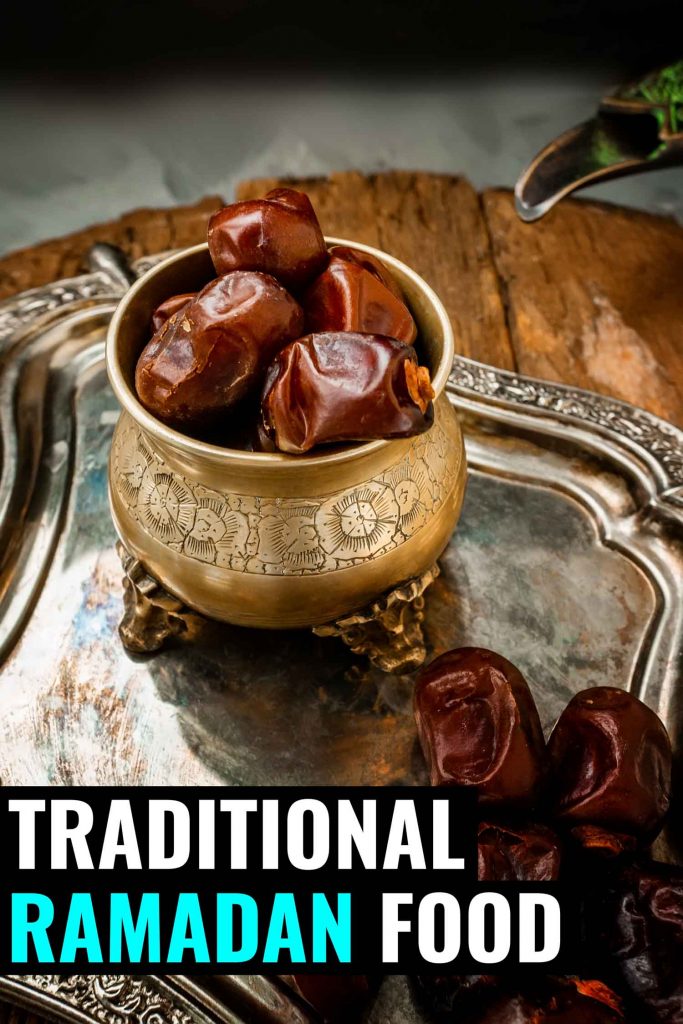
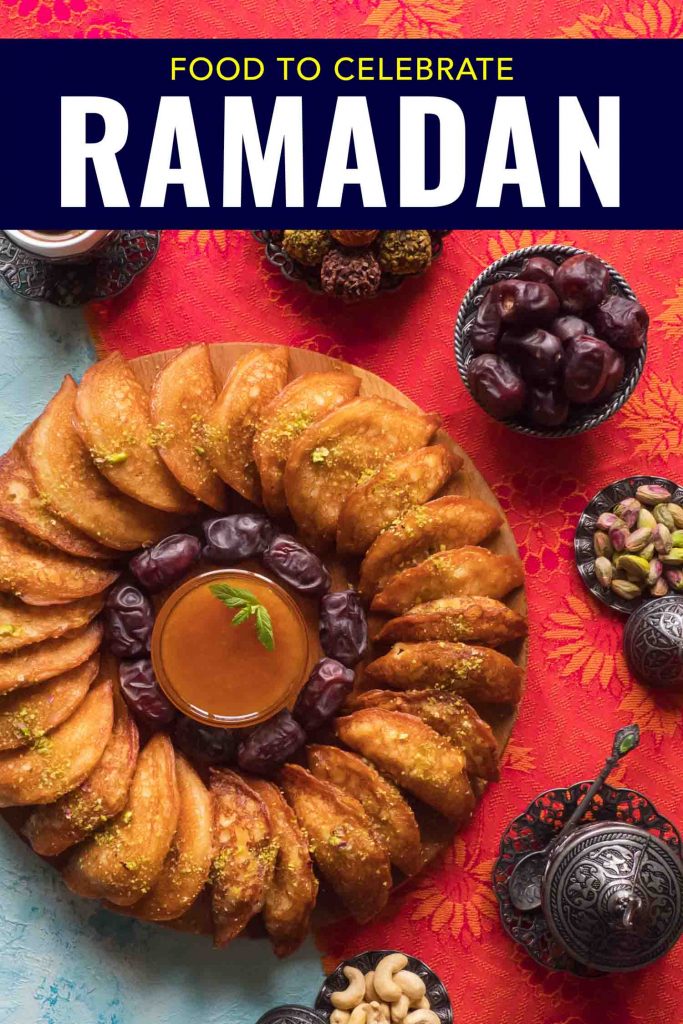
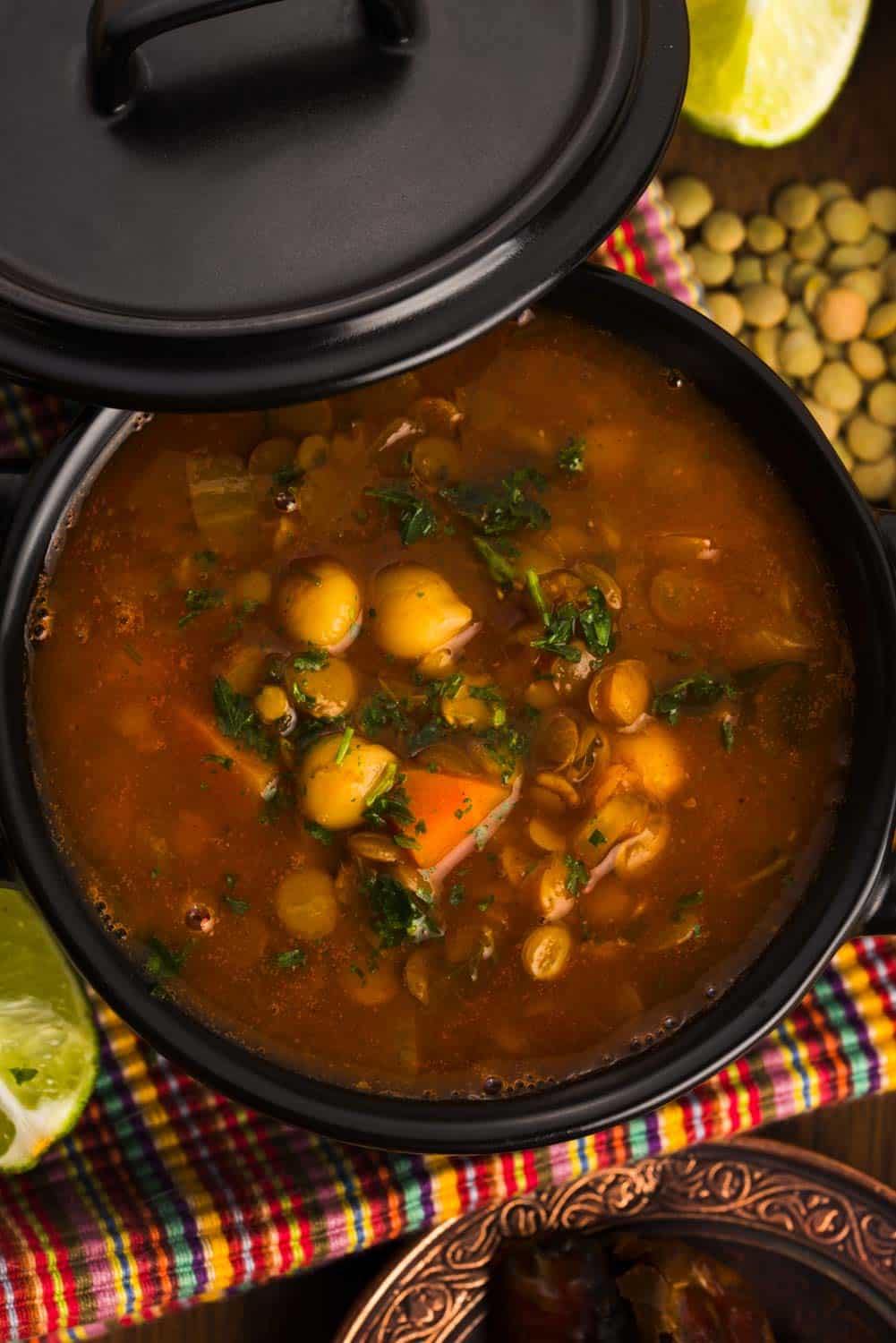
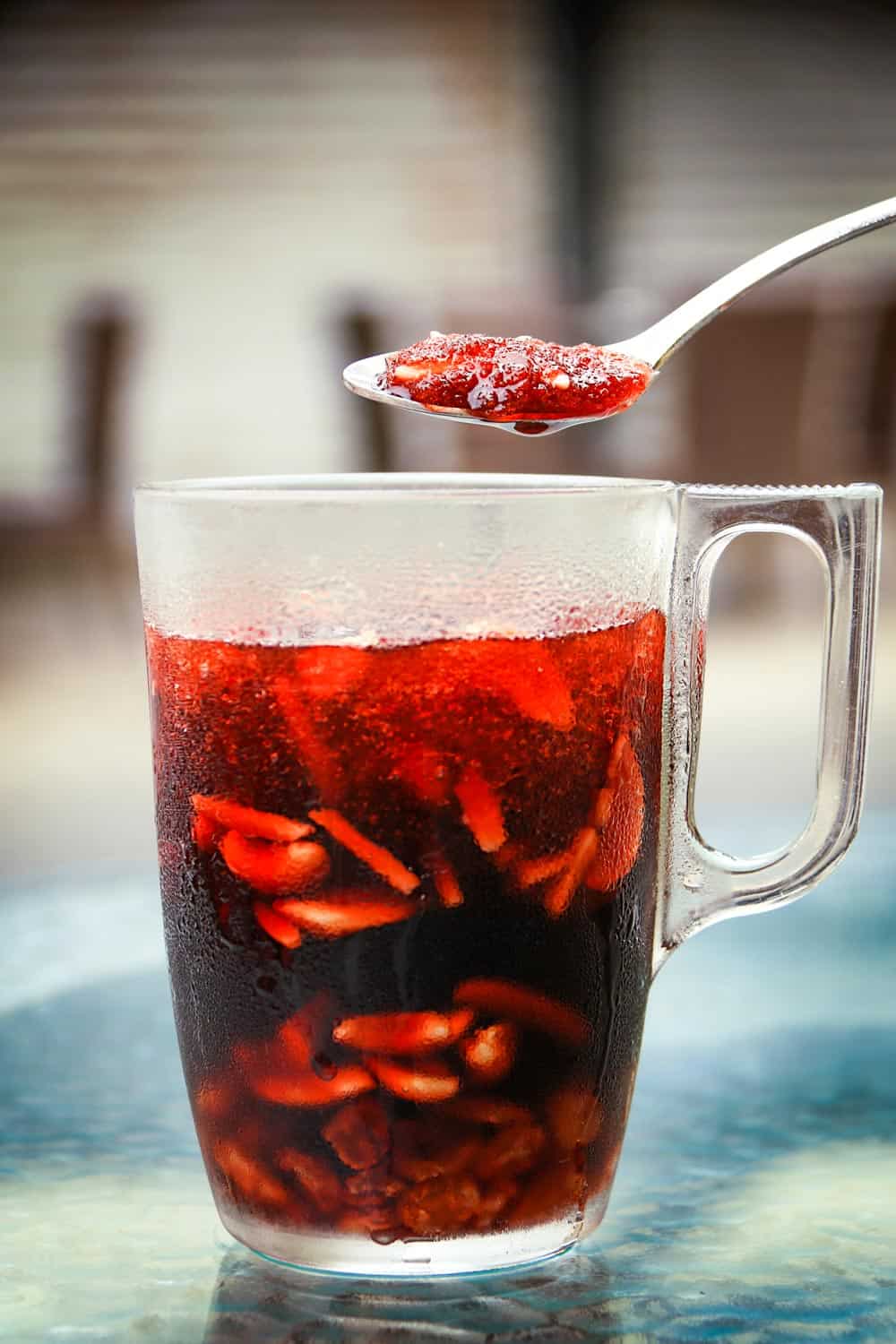
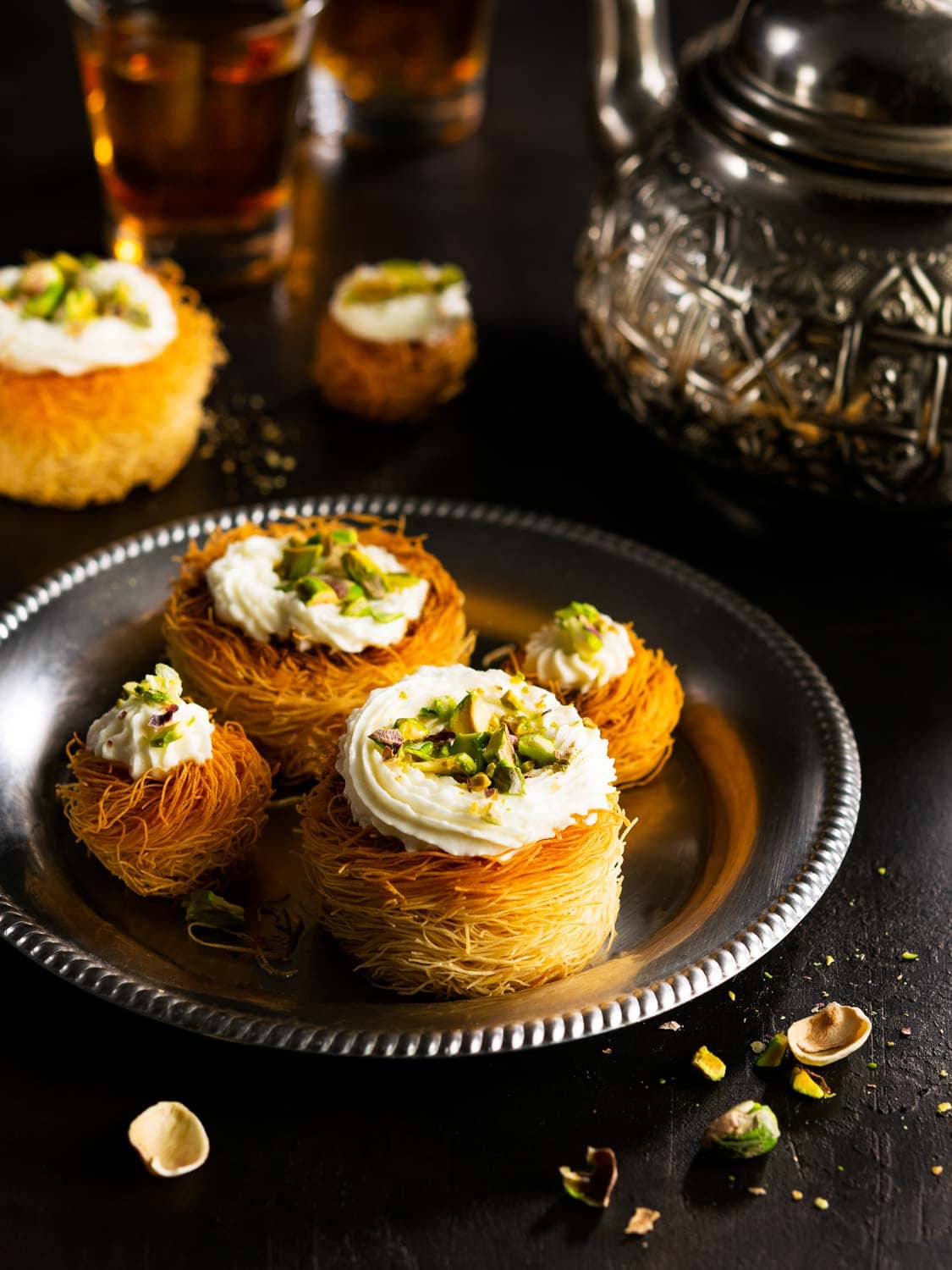
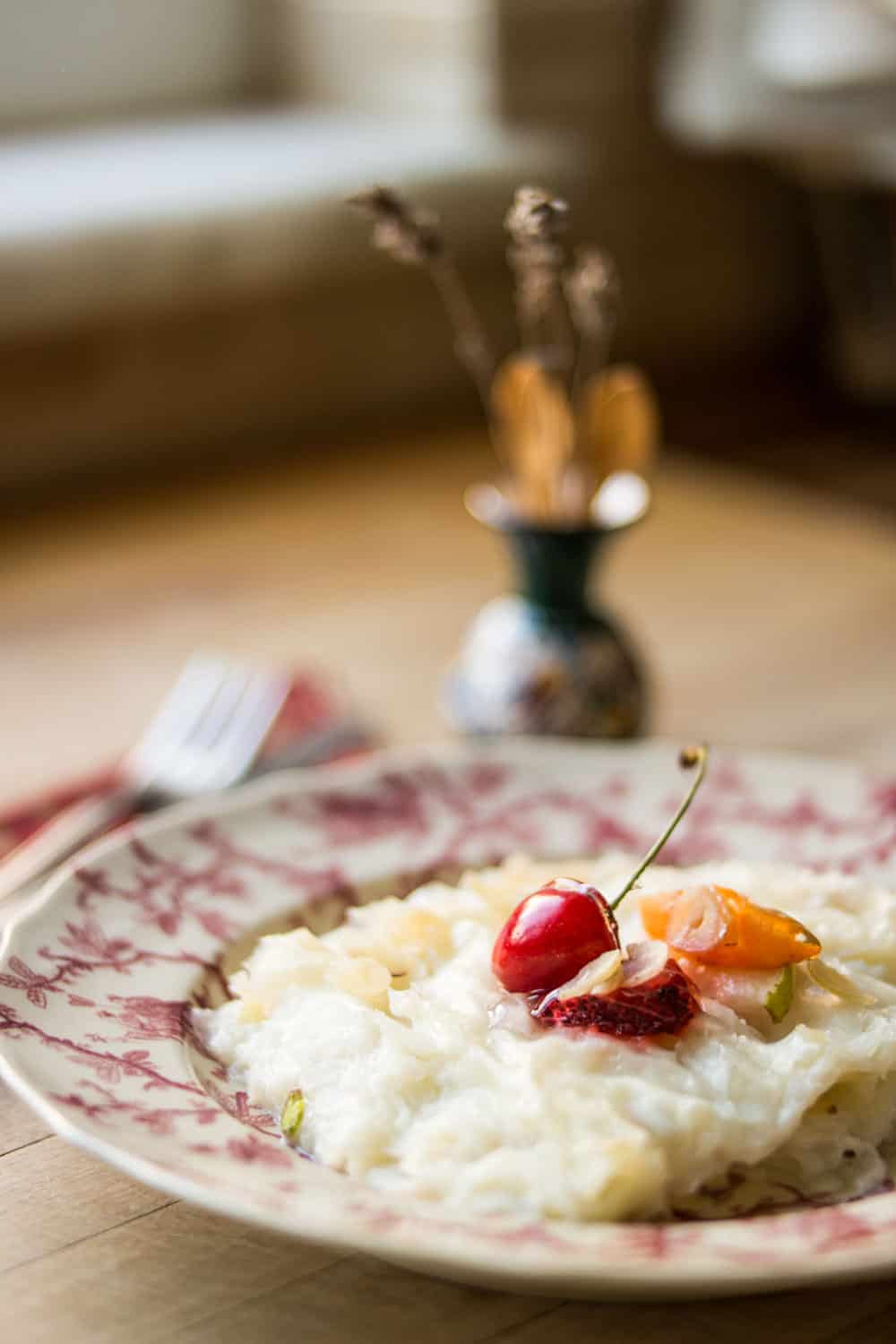
Mouth watering…I have tried a few of them…and I must admit that they are simply delicious.
Dang! I did not know there was this much variation and have to be honest. I expected it to be more along the lines of vegetable curry, samosas, etc. Sadly there were only two on this list that I am familiar with Biryani and Turkish Delight – ouch!
A fascinating read – thanks Nikki
Thanks for sharing here. They are simply delicious dishes. I like it.